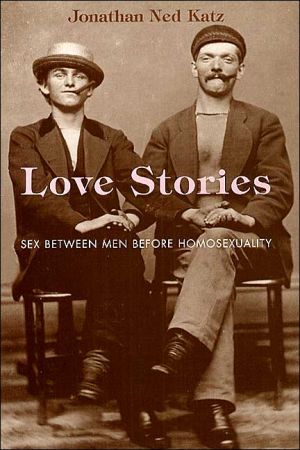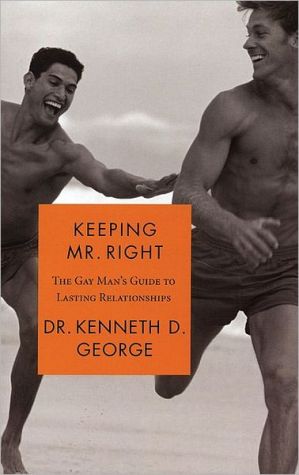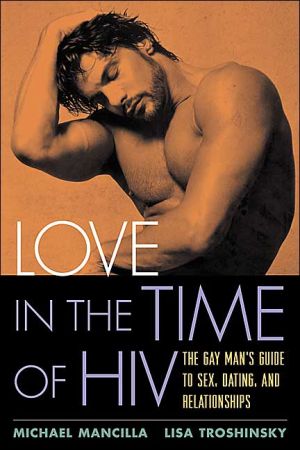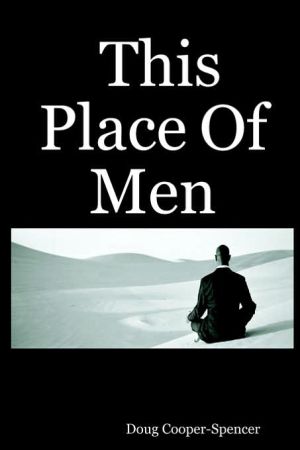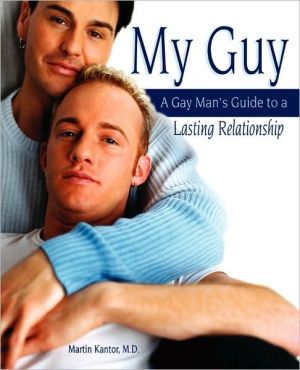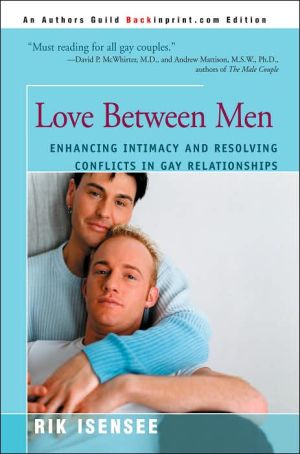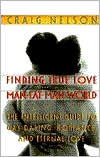Love Stories: Sex between Men before Homosexuality
In Love Stories, Jonathan Ned Katz presents stories of men's intimacies with men during the nineteenth century -- men like Abraham Lincoln and Walt Whitman -- drawing flesh-and-blood portraits of intimate friendships and the ways in which men struggled to name, define, and defend their sexual feelings for one another. In a world before "gay" and "straight" referred to sexuality, these men created new ways to name and conceive of their relationships, and Katz dives into history to offer us a...
Search in google:
"History at its best: informative, insightful, at times downright titillating."-Kirkus Reviews In Love Stories, Jonathan Ned Katz presents stories of men's intimacies with men during the nineteenth century-men like Abraham Lincoln and Walt Whitman-drawing flesh-and-blood portraits of intimate friendships and the ways in which men struggled to name, define, and defend their sexual feelings for one another. In a world before "gay" and "straight" referred to sexuality, these men created new ways to name and conceive of their relationships, and Katz dives into history to offer us a clearer picture than ever before of how they navigated the uncharted territory of male-male desire. Publishers Weekly Forget about the Lincoln Bedroom scandals of the Clinton administration; the real scandal is who was in Lincoln's bed in 1837. This highly provocative, often startling reconsideration of 19th- and early 20th-century male-male sexual relationships begins with a detailed description of what Katz depicts as Abraham Lincoln's romantic, erotic relationship with Joshua Speed, the man with whom he shared a decades-long intimate friendship, as well as a bed for three years. While Speed himself wrote that "no two men were ever more intimate," Katz is not arguing that these two men were homosexual; Katz makes it clear that referring "to early nineteenth-century men's acts or desires as gay or straight, homosexual, heterosexual, or bisexual" places "their behaviors and lusts within our sexual system, not theirs." Katz, whose groundbreaking 1976 Gay American History is foundational to contemporary gay and lesbian studies, has researched deeply and widely, uncovering astonishing materials: a relationship between John Stafford Fiske, the U.S. consul to Scotland in 1870, and famous British cross-dresser Ernest Boulton; the existence of the Slide, a male-male pick-up bar in Greenwich Village in the 1890s; romances between older sailors and their "chickens" during the Civil War. Walt Whitman, noted Harvard mathematician James Millis Peirce, writer Charles Warren Stoddard, English philosopher Edward Carpenter Katz finds these men engaged in deeply loving and erotic friendship with no specific labels of sexual orientation attached. All of this is described and shaped with enormous sensitivity and judiciousness. Written clearly, succinctly and free from postmodern jargon, Katz's arguments are strong andvibrant. By contextualizing "sexual, acts, sexual desires, sexual identities" in their historical periods, but never avoiding the specifics of sexual activity or emotional connection, he contributes surprising, even shocking, insights into how sexual and emotional relationships are constructed, as well as demonstrating the enormous diversity and malleability of human eroticism. (Dec. 21) Copyright 2001 Cahners Business Information.
Love Stories in BriefPt. ISearching for Words1No Two Men Were Ever More Intimate32Dear Beloved Trio263A Gentle Angel Entered33Pt. IIMaking Monsters4Already Do the Beastly Sodomites of Gotham Quake455Abominable and Detestable Crimes606The Man Monster77Pt. IIIComing Together, Coming to Terms7Voices of Sexes and Lusts958Sincere Friends1239A Major Fell in Love with a Boy13310I Got the Boys14711Yes, I Will Talk of Walt16412In the Name of CALAMUS Listen to Me!17813A Heart Full of Love and Longing18814Empty chair, Empty Bed, Empty House20215I Wish You Would Put the Ring on My Finger Again220Pt. IVGoing Public16He Cannot Be Oblivious of Its Plainer Meanings23517Wild with Passion24618I Cannot Get Quite to the Bottom of Calamus25719Ardent and Physical Intimacies27220Men Given to Unnatural Practices28821To Unite for Defense29722A Natural, Pure, and Sound Passion30823Abnormal Passion31724A Much More Intimate Communion321Sex and Affection between Men - Then and Now330Acknowledgments345Notes351Bibliography389Index407
\ Publishers WeeklyForget about the Lincoln Bedroom scandals of the Clinton administration; the real scandal is who was in Lincoln's bed in 1837. This highly provocative, often startling reconsideration of 19th- and early 20th-century male-male sexual relationships begins with a detailed description of what Katz depicts as Abraham Lincoln's romantic, erotic relationship with Joshua Speed, the man with whom he shared a decades-long intimate friendship, as well as a bed for three years. While Speed himself wrote that "no two men were ever more intimate," Katz is not arguing that these two men were homosexual; Katz makes it clear that referring "to early nineteenth-century men's acts or desires as gay or straight, homosexual, heterosexual, or bisexual" places "their behaviors and lusts within our sexual system, not theirs." Katz, whose groundbreaking 1976 Gay American History is foundational to contemporary gay and lesbian studies, has researched deeply and widely, uncovering astonishing materials: a relationship between John Stafford Fiske, the U.S. consul to Scotland in 1870, and famous British cross-dresser Ernest Boulton; the existence of the Slide, a male-male pick-up bar in Greenwich Village in the 1890s; romances between older sailors and their "chickens" during the Civil War. Walt Whitman, noted Harvard mathematician James Millis Peirce, writer Charles Warren Stoddard, English philosopher Edward Carpenter Katz finds these men engaged in deeply loving and erotic friendship with no specific labels of sexual orientation attached. All of this is described and shaped with enormous sensitivity and judiciousness. Written clearly, succinctly and free from postmodern jargon, Katz's arguments are strong andvibrant. By contextualizing "sexual, acts, sexual desires, sexual identities" in their historical periods, but never avoiding the specifics of sexual activity or emotional connection, he contributes surprising, even shocking, insights into how sexual and emotional relationships are constructed, as well as demonstrating the enormous diversity and malleability of human eroticism. (Dec. 21) Copyright 2001 Cahners Business Information.\ \ \ \ \ Kirkus ReviewsSure, Walt Whitman was a big queen, but Abraham Lincoln? Maybe he was, maybe he wasn't. Drawing on contemporary accounts of love, affection, and sex between men in 19th-century America, Katz (The Invention of Heterosexuality, 1995, etc.) teases out a history of sexuality in an era determined to veil it. He begins with a portrait of the intense friendship between Lincoln and Joshua Fry Speed, who avowed that "no two men were ever more intimate." Katz is careful to place such comments precisely within their sociocultural context; along with many other sexual historians, he believes that the words "heterosexuality" and "homosexuality" represent recent attempts to construct human sexuality into polarized and opposite extremes. By denaturalizing such a construct and pointing out its problems, Katz elucidates the shifting dynamics of bedroom behavior. The stories here, culled from diaries, journals, newspaper articles, court cases, and other documents, create a living tableau of 19th-century male sex in America. Whitman looms large, taking several lovers and thus several chapters. History's unknowns, however, provide some of the most illuminating material; the stories of men such as Albert Dodd, William Davis, John Stafford Fiske, and Peter Sevanley must be told if we are to understand the shifting realities of sexuality from generation to generation. The photographs and illustrations- female impersonators, men wrestling, a bathhouse brochure-allow readers to witness the complex but often blatant coding of non-normative sexuality. Although most of Katz's material concerns personal relationships between men, we do get glimpses into a communal queer culture as well through stories of suchinstitutions as Frank Stevenson's bar, the Slide, lasciviously dubbed by the New York Press as the "The Wickedest Place in New York." History at its best: informative, insightful, at times downright titillating.\ \
